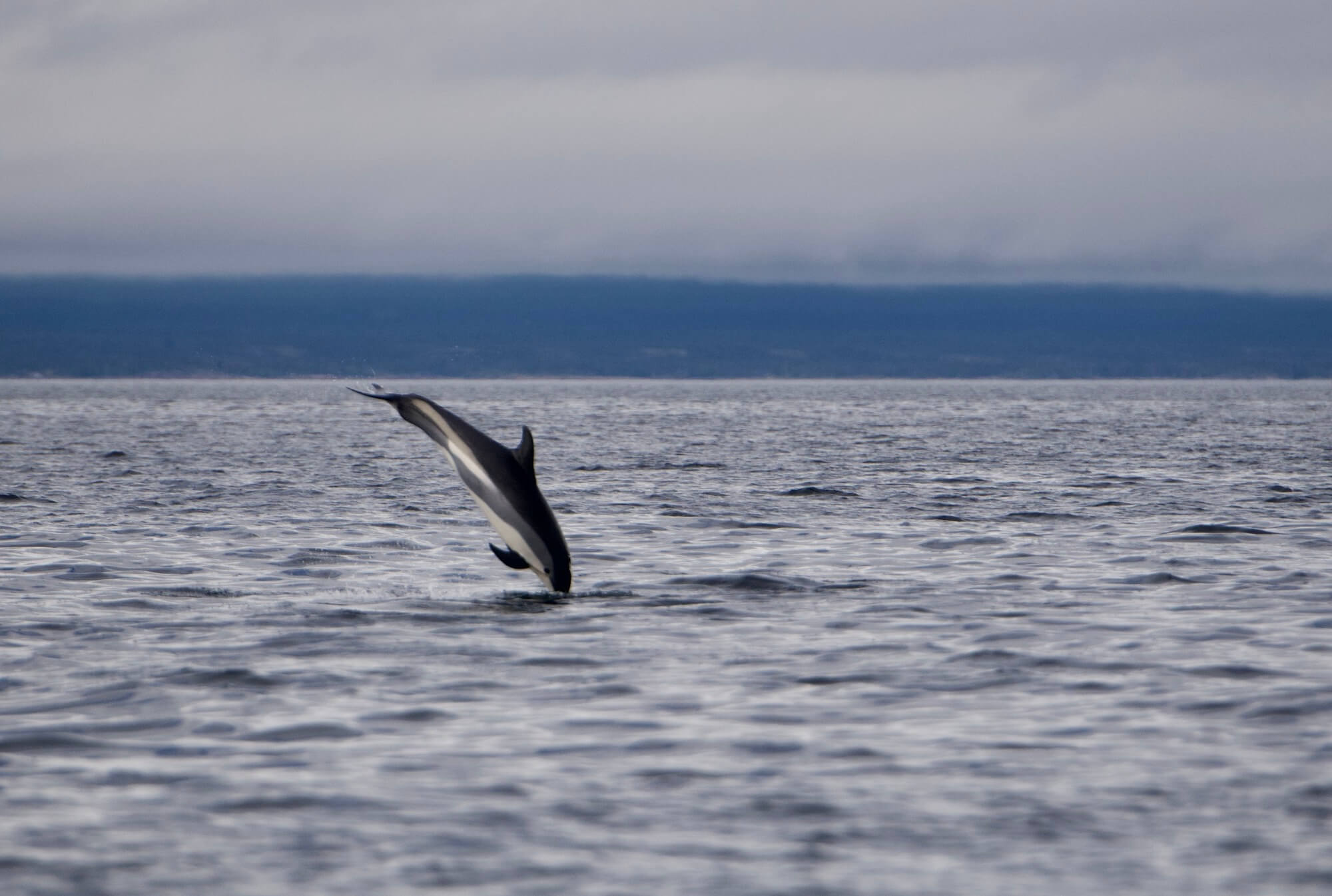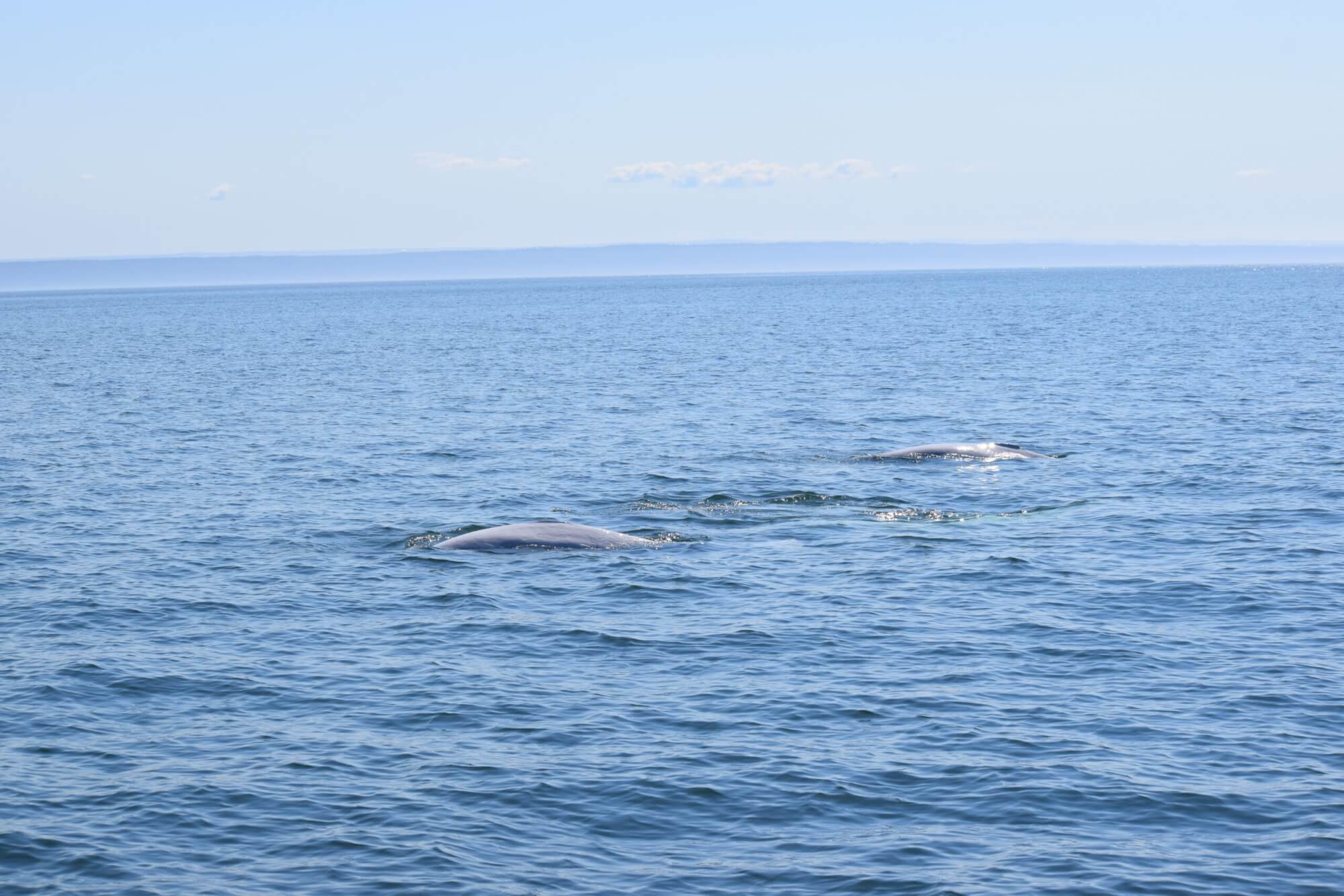Mariners are well aware that in fall, storms often produce strong winds from the east or northeast. While some enthusiasts were forced to stay on dry land to avoid the inclement weather, others were able to take advantage of a few calm days to get out and observe marine mammals.
In Gaspé Bay, one captain/naturalist reported a handful of sightings: “This week we saw a few humpbacks, minke whales and porpoises. One morning while I was alone on shore getting ready to start my day, I was lucky enough to see a humpback whale lobtailing multiple times.” Lobtailing is a behaviour that whales exhibit in which they repeatedly strike the water with their tail. The purpose of this behaviour is not well understood, but it might serve to communicate with other individuals or frighten predators away. Harbour and grey seals were also observed in the area.
On the other side of the gulf, i.e. Quebec’s Côte-Nord region, Atlantic white-sided dolphins, minke whales and harbour porpoises were sighted by seasoned observers at several places between the Mingan sector and Les Escoumins. Two humpback whales blasted not far off the coast of Franquelin, much to the delight of observers watching from shore.
Where are all the blue whales?
In the estuary, it is anxiety that colours the texts of amateur cetologist and long-time observer René Roy. “For 20 years, the month of September has always been the best time to observe large rorquals in the estuary, particularly blue whales,” he says. This season, I did not observe any large whales here this month, just like last year in the Matane–Grosses-Roches sector, where blue whales had always foraged in large numbers over the past 20 years. What’s going on in the Lower Estuary?” The year 2021 had also raised questions in this regard.
A colourful season
Autumn is also the season of colours, when the trees are ablaze with shades of red, orange and yellow. But on the water, it is the white backs of belugas that dot the St. Lawrence.
In Sainte-Irénée, a group of 6 belugas was spotted on Sunday, September 25 by a local resident. Could these be the same individuals that were seen a few days later off Cap-à-l’Aigle in La Malbaie?
In Tadoussac, near the Marine Mammal Interpretation Centre, belugas were also observed from time to time, depending on the tides. Minke whales and harbour porpoises were observed, too, not to mention the humpbacks that sometimes make an unexpected incursion into these waters. Offshore, between Tadoussac and Les Escoumins, the presence of humpback whales, minke whales, harbour porpoises and harbour seals was noted.
The question is often asked: Is fall a good time of year for observing marine mammals? Despite the variably cooperative weather, gorgeous sunny days are also fairly frequent, as are the marine mammals. This is an opportunity to observe a number of species still present in the salty waters of the St. Lawrence while enjoying the spectacular foliage along the coastline. It also coincides with seabird migration, when seasoned observers can enjoy the opportunity to admire razorbills, Atlantic puffins or common eiders along with their favourite marine mammals. What more could one ask for?
Weekly sighting map
These data were reported by our network of observers. They give an idea of the presence of whales and do not represent the real distribution of whales in the St. Lawrence. Use them for fun!
Click on the whale or seal icons to discover the species, the number of individuals, additional information or photos of the sighting. To enlarge the map, click on the icon in the upper right corner. The map works well on Chrome and Firefox, but not so well on Safari.
To display the list of sightings, click on the icon in the upper left corner.
Want to share your observations and contribute to citizen science? Use the marine mammal observation tool.







